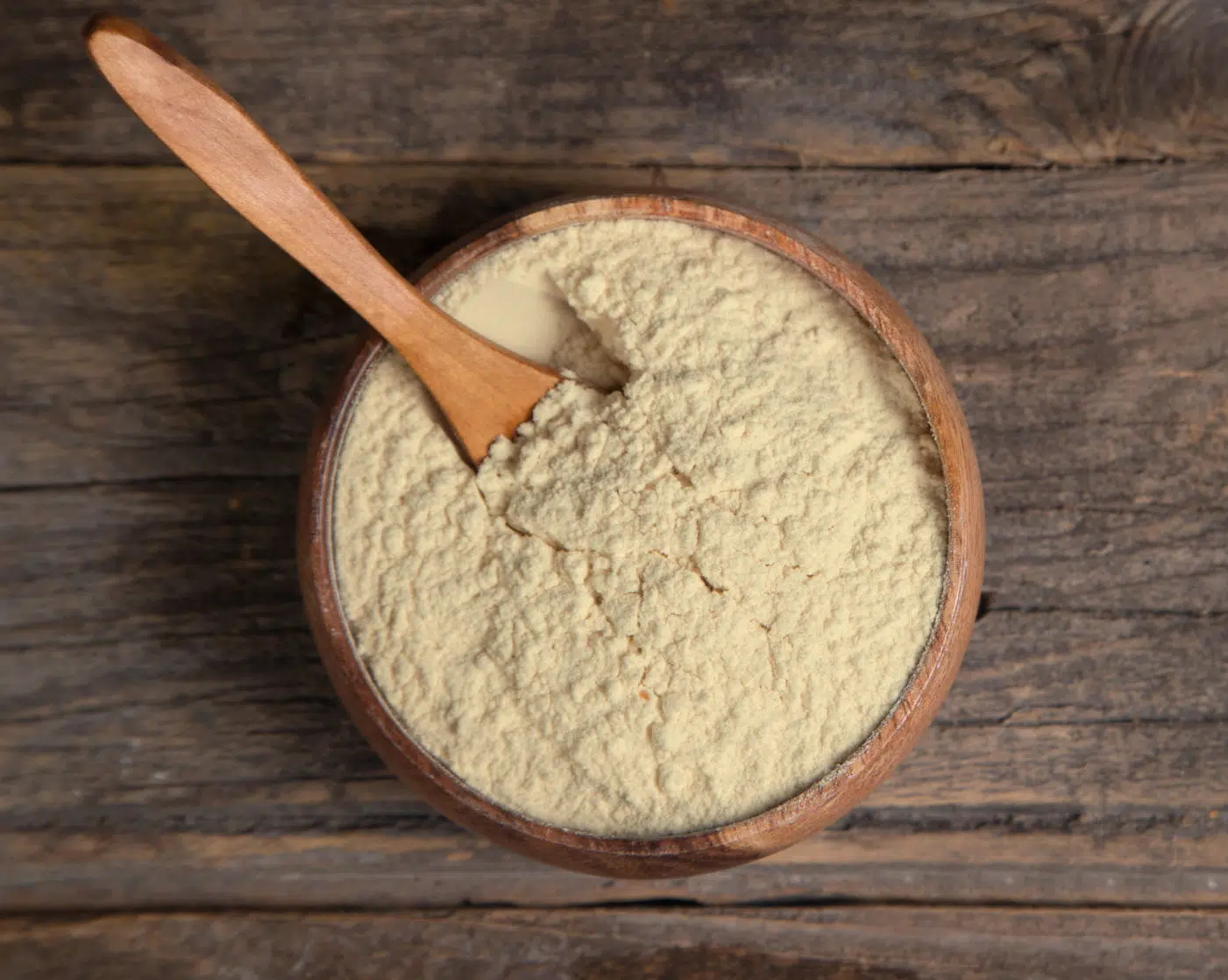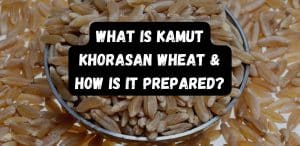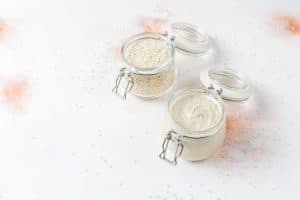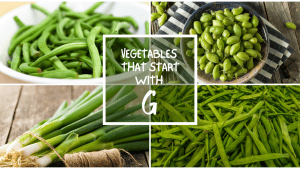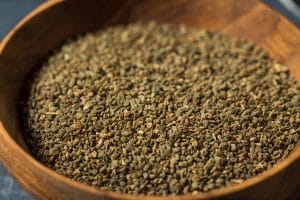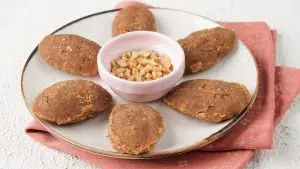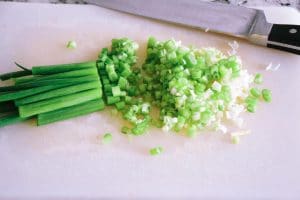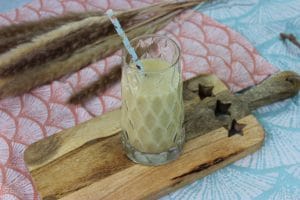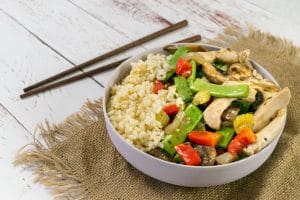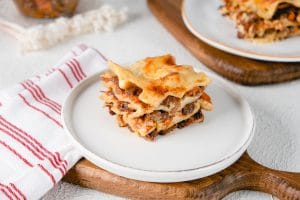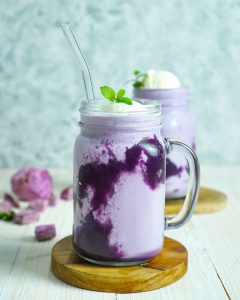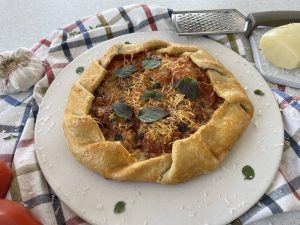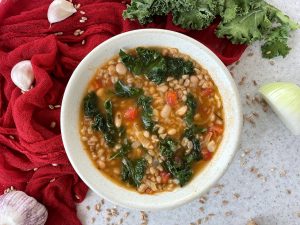What is Vital Wheat Gluten? How to Use it and Gluten-Free Substitutes
Important Note: When you buy through our links, we may earn a commission. As an Amazon Associate we earn from qualifying purchases. Content, pricing, offers and availability are subject to change at any time - more info.
You might have seen vital wheat gluten in the baking supply aisle of your health food market, or perhaps even in your local grocery store. If you aren’t familiar with this product, I’ll try to break it down for you so you can understand what it is, how to use it, and where you can purchase it.
Wheat gluten is a flour-like powder that is primarily made up of gluten with some starch added. Gluten is the protein that is in certain grains including wheat, barley, and rye.
Gluten is present in or added to a variety of food products and recipes. It is responsible for the soft, chewy texture that is characteristic of yeast-risen bread. When gluten is heated it forms an elastic web that can stretch and trap gasses. This allows for optimal leavening or rising. It also gives certain foods a unique texture that is similar to a variety of animal protein based products.
How is Vital Wheat Gluten Made?
Vital wheat gluten is not a flour though it is derived from wheat flour. It’s made by hydrating wheat flour, which activates the protein. It is then processed to remove everything but the gluten. After that, it is dried and ground into a powder that has a high concentration of gluten.
How is Vital Wheat Gluten used in Recipes?
Vital wheat gluten is used in baked goods and pasta. It can also be used as a meat substitute for vegan and vegetarian dishes.
Baked Goods and Pasta
This concentrated protein powder is commonly used in baking recipes. Though it is often an optional ingredient, it can come in handy for baking bread, especially if using flour that is lighter in gluten protein content than white flour, such as whole wheat or rye. There are some who say you could also add vital wheat gluten to gluten-free flours, such as buckwheat, teff, and sorghum to improve the texture of the dishes or baked goods you are making using those flours.
Adding vital wheat gluten to bread, bagel, pizza, or pasta dough can improve its elasticity. It can also create a better crumb and chewiness. Wheat gluten can also add more structure to denser breads that contain nuts, seeds, dried fruits, or other non-flour ingredients. The recommended ratio is one tablespoon of vital wheat gluten to two cups of flour.
Meat Substitute
Another popular use for vital wheat gluten is in the making of seitan. Seitan is a meat alternative that has a similar texture to a variety of animal proteins. This is sometimes referred to as wheat meat.
Seitan is made by mixing vital wheat gluten with water or vegetable broth and seasonings for added flavor. The mixture is kneaded into a stiff dough that is formed or rolled into the desired shape and then steamed, baked, or boiled. It can be used as an alternative in recipes that call for chicken, pork, beef, sausage, and more.
Vital wheat gluten is what gives structure to vegan deli meats and sausages. You can make faux salami, ham, pepperoni, and hot dogs. By incorporating wheat gluten into a mix of pureed vegetables and a variety of herbs and spices you can recreate the flavors and textures of these meat products.
What if I can’t Eat Gluten? Here are a few Vital Wheat Gluten Substitutes
Many people are either gluten-intolerant or have an autoimmune condition, such as celiac disease, that precludes them from eating gluten without getting seriously ill. If that is your situation, then vital wheat gluten should not be consumed by you.
There are some suggested alternatives to vital wheat gluten. However, they don’t behave in exactly the same way as this concentrated plant protein. Here are some you might want to experiment with:
Xanthan Gum
Xanthan gum duplicates most of gluten’s effects in recipes, especially baked goods. You can add about 1/2 teaspoon of xanthan gum for every cup of flour when you’re baking quick breads and 3/4 teaspoon per cup of flour for yeast-risen doughs.
Whey Protein Powder
Whey protein can replicate the structural integrity needed in baked goods when you omit gluten. However, whey protein doesn’t provide the elasticity that gluten does. To achieve this you will need to add 1/2 teaspoon of xanthan gum to every cup of powdered whey you use. You can use whey protein up to one-third of the total flour in a low-carb or gluten-free baked good.
Eggs
Eggs are used as a binding agent and a stabilizer in baked goods. Egg proteins also trap air during baking, which helps doughs and other baked goods to rise. Use whole eggs because the yolks will add to the moisture and texture of the finished product.
Guar Gum
Guar gum comes from the complex carbohydrates found inside the seed of the guar plant. Similar to xanthan gum, it contributes structure, moisture, and volume to baked goods. Guar gum doesn’t provide much in the way of elasticity. Use about 1/2 teaspoon to 1 teaspoon of guar gum for every cup of flour.
Where can I buy Vital Wheat Gluten?
You can find vital wheat gluten in most health food markets, such as Whole Foods Market and Fairway. You can easily find vital wheat gluten online through Amazon or directly from manufacturers. The most popular brands are Bob’s Red Mill, Hodgson Mill, Anthony’s, and Kate Naturals.
An unopened package will last for several years. Once opened, it will stay fresh in a sealed bag or jar for up to six months.
